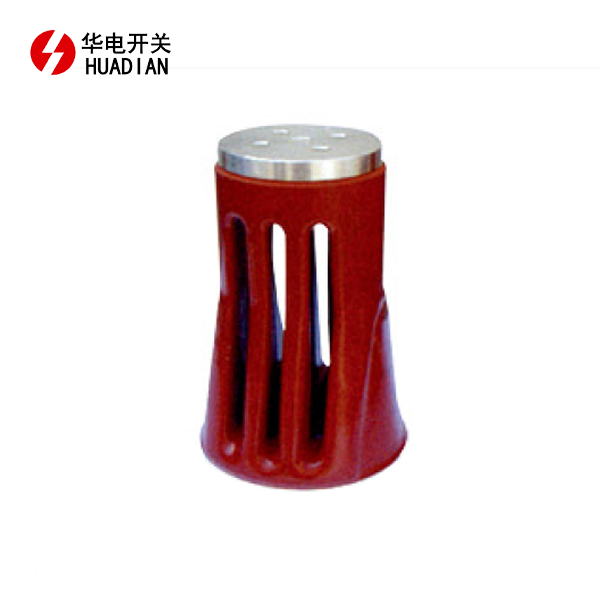The Science Behind Vulcanised Copper-Aluminium Contact Arms
Composition and Material Properties
Vulcanised copper-aluminium contact arms are a marvel of materials engineering. The composition typically consists of a copper core surrounded by an aluminium outer layer, bonded together through the vulcanisation process. This combination leverages the high electrical conductivity of copper and the lightweight nature of aluminium, creating a material that outperforms traditional single-metal contact arms.
The resulting composite material exhibits several advantageous properties:
- Enhanced thermal stability
- Improved corrosion resistance
- Increased mechanical strength
- Reduced overall weight
The Vulcanisation Process
Vulcanisation, originally developed for rubber processing, has been adapted for metal composites with remarkable results. In the context of copper-aluminium contact arms, the process involves the following steps:
- Preparation of copper and aluminium components
- Application of a specialized bonding agent
- High-temperature and high-pressure treatment
- Cooling and post-processing
Microstructural Analysis
At the microscopic level, vulcanised copper-aluminium contact arms reveal a complex structure that contributes to their durability. The interface between the copper and aluminium layers shows a gradual transition, rather than a sharp boundary. This gradient structure helps to distribute stress more evenly across the material, reducing the likelihood of delamination or fracture under high-stress conditions.
Advanced imaging techniques, such as scanning electron microscopy (SEM) and transmission electron microscopy (TEM), have revealed the presence of intermetallic compounds at the copper-aluminium interface. These compounds play a crucial role in enhancing the bond strength and overall durability of the contact arm.
Performance Advantages of Vulcanised Copper-Aluminium Contact Arms
Electrical Conductivity and Heat Dissipation
One of the primary advantages of vulcanised copper-aluminium contact arms is their exceptional electrical conductivity. The copper core provides a low-resistance path for electrical current, while the aluminium outer layer aids in heat dissipation. This combination results in reduced energy losses and improved overall efficiency of the electrical system.
The enhanced heat dissipation capabilities of these contact arms are particularly beneficial in high-current applications. By efficiently dispersing heat, the arms maintain lower operating temperatures, which in turn contributes to their longevity and reduces the risk of thermal damage to surrounding components.
Mechanical Strength and Wear Resistance
Vulcanised copper-aluminium contact arms exhibit superior mechanical strength compared to their single-metal counterparts. The vulcanisation process creates a material that is more resistant to deformation, bending, and fatigue. This increased strength translates to improved durability in applications involving frequent switching operations or high mechanical stress.
Moreover, the composite nature of these contact arms results in enhanced wear resistance. The aluminium outer layer provides a protective barrier against abrasion and erosion, while the underlying copper core maintains the arm's electrical performance. This combination significantly extends the operational lifespan of the contact arm, reducing the need for frequent replacements and maintenance.
Corrosion and Oxidation Resistance
Another key factor contributing to the durability of vulcanised copper-aluminium contact arms is their improved resistance to corrosion and oxidation. The aluminium outer layer naturally forms a thin, protective oxide film when exposed to air. This film acts as a barrier against further oxidation and corrosion, preserving the integrity of the underlying copper core.
In environments where corrosive agents are present, such as industrial settings or coastal areas, this enhanced resistance to corrosion is particularly valuable. It ensures that the contact arms maintain their electrical and mechanical properties over extended periods, even under challenging conditions.
Applications and Future Prospects
Current Industrial Applications
Vulcanised copper-aluminium contact arms have found widespread use in various industrial applications, particularly in power distribution and control systems. Some notable applications include:
- Circuit breakers and switchgear
- High-voltage transmission equipment
- Electric vehicle charging stations
- Renewable energy systems (solar and wind power)
Emerging Technologies and Innovations
As technology continues to advance, researchers and engineers are exploring new ways to enhance the properties of vulcanised copper-aluminium contact arms. Some promising areas of development include:
- Nano-engineered interfaces for improved bonding
- Integration of smart materials for self-diagnostics
- Advanced surface treatments for enhanced wear resistance
- Optimization of copper-aluminium ratios for specific applications
Sustainability and Environmental Considerations
The durability of vulcanised copper-aluminium contact arms also contributes to their environmental sustainability. By lasting longer and requiring less frequent replacement, these components help reduce waste and conserve resources. Additionally, their improved efficiency in electrical systems can lead to energy savings, further enhancing their environmental benefits.
As the world moves towards more sustainable technologies, the role of durable and efficient components like vulcanised copper-aluminium contact arms becomes increasingly important. Their ability to withstand harsh conditions and maintain performance over extended periods aligns well with the goals of creating more resilient and long-lasting infrastructure.
Conclusion
Vulcanised copper-aluminium contact arms represent a significant advancement in electrical component technology, offering substantial improvements in durability and performance. By combining the best properties of copper and aluminium through an innovative vulcanisation process, these contact arms provide enhanced electrical conductivity, improved mechanical strength, and superior resistance to wear and corrosion. Their ability to withstand harsh conditions and maintain optimal performance over extended periods makes them invaluable in a wide range of industrial applications. As research continues and new innovations emerge, the future of vulcanised copper-aluminium contact arms looks promising, with potential for even greater durability and efficiency in electrical systems.
Contact Us
Are you looking to enhance the durability and performance of your electrical systems? Shaanxi Huadian Electric Co., Ltd. offers high-quality vulcanised copper-aluminium contact arms and other advanced electrical components. To learn more about our products and how they can benefit your operations, please contact us at austinyang@hdswitchgear.com/rexwang@hdswitchgear.com/pannie@hdswitchgear.com. Our team of experts is ready to assist you in finding the perfect solution for your electrical equipment needs.





